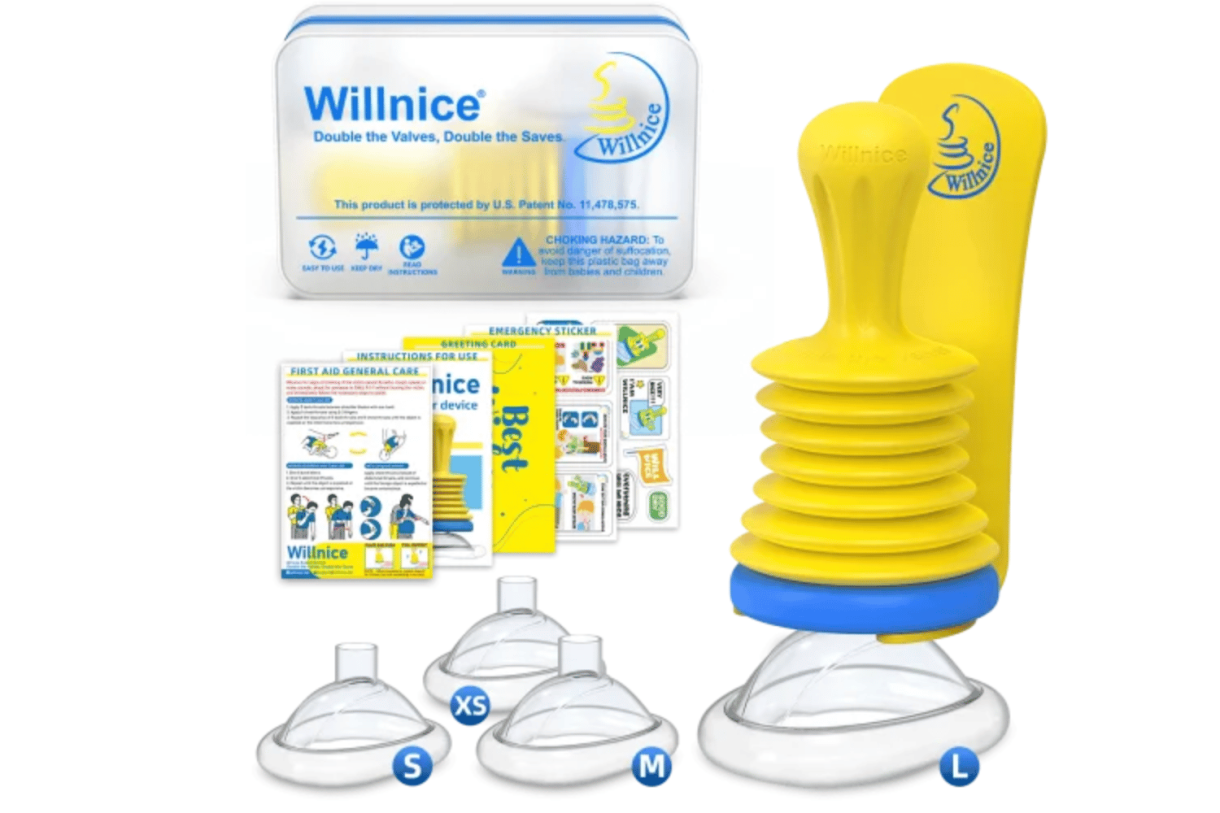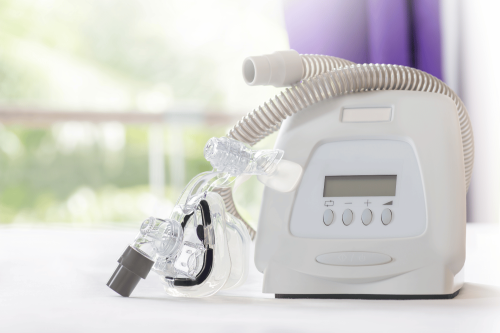
What is an Anti-Choking Device?
An anti-choking device is a non-invasive medical device designed to assist during a choking emergency. It functions by creating suction to remove obstructions from the airway. The device is used when an individual is conscious but unable to expel the blockage through coughing or other natural reflexes.
Anti-choking devices are often simple to use and involve a mask or similar component placed over the mouth and nose to create a seal. By generating negative pressure, the device facilitates the dislodging of the object, allowing the airway to clear effectively. These devices are suitable for use in various settings, including homes, schools, or public areas, to address choking emergencies promptly.
How Do Anti-Choking Devices Work?
Anti-choking devices operate by creating suction or pressure to dislodge the object causing the airway obstruction. To understand how these devices function effectively, it is essential to explore their key components and specific roles.
Suction Mechanism: The device's core feature is designed to generate negative pressure. Creating a vacuum effect helps to dislodge the obstruction from the airway, thereby clearing the blockage.
Mask or Seal: A mask or sealing component is placed over the individual's nose and mouth to ensure a tight fit. This ensures that the suction or pressure is efficient and directed precisely to aid in removing the object.
Valve System: Many anti-choking devices include a valve to regulate airflow and maintain proper suction effectively. This component ensures that the pressure is applied safely and consistently during use.
Each of these components works in tandem to make anti-choking devices reliable tools for managing airway obstructions in emergencies. By understanding their functionality, users can confidently use these devices to save lives.
Uses of Anti-Choking Devices
Anti-choking devices are specifically designed to assist in choking emergencies. Their primary uses include:
Clearing Airway Obstructions
Anti-choking devices are primarily used to remove foreign objects causing airway blockages. By applying targeted suction, these devices help restore airflow quickly and effectively, preventing further complications and potentially life-threatening situations.
Emergency Use for All Age Groups
These devices are versatile and can be used for individuals of different ages, from children to the elderly. Whether in public spaces, schools, or homes, they serve as crucial tools to address choking incidents, ensuring safety across diverse environments.
By providing a safe, reliable means to manage airway obstructions, anti-choking devices play an integral role in emergency care, promoting greater preparedness and confidence in tackling choking emergencies.
Benefits of Anti-Choking Devices
Anti-choking devices are revolutionary in emergency care, providing a reliable solution for swiftly and effectively managing choking incidents. Here are some key benefits of using anti-choking devices:
Effective in a Variety of Emergency Scenarios
Anti-choking devices are designed to address choking incidents across a broad spectrum of situations. Whether caused by food, small objects, or other airway obstructions, these devices can effectively clear obstructions, allowing individuals to breathe again quickly.
Safe and User-Friendly
These devices are created with safety and ease of use in mind. They are non-invasive and require minimal training, making them suitable for use by people of all ages and skill levels. This simplicity ensures rapid response in critical moments, reducing the risk of panic or errors during emergencies.
Improve Emergency Preparedness
Having an anti-choking device on hand enhances individuals', families', and institutions' readiness for unexpected choking incidents. The availability of such a tool increases confidence in emergency response capabilities, fostering a sense of security among users.
Reduced Risk of Complications
By promptly and efficiently removing airway obstructions, anti-choking devices help minimize the risk of associated complications, such as breathing difficulties or unconsciousness. This timely intervention also decreases the potential need for more invasive medical procedures.
Anti-choking devices ultimately offer peace of mind and a reliable way to address choking emergencies, safeguarding lives across various environments and scenarios.
Risks and Side Effects of Anti-Choking Devices
While anti-choking devices are generally considered safe and effective, there are a few risks and potential side effects to be aware of before use. Below are some common considerations associated with these devices:
General Discomfort
Using an anti-choking device may occasionally result in minor discomfort during operation. The device may feel awkward or unfamiliar, particularly for first-time users. This discomfort usually subsides with practice and proper device handling.
Soft Tissue Irritation
Improper use or repeated deployment of the device may lead to irritation of the oral or throat tissues. This is often due to excessive suction or incorrect positioning. Following the manufacturer's instructions helps prevent such issues.
Anxiety or Panic
Some individuals may experience anxiety or panic during a choking incident, making the use of the device more challenging. The sudden application of suction may feel invasive to some users, especially those who are unfamiliar with the device.
Ineffectiveness in Severe Cases
Although anti-choking devices are designed to be effective in most choking situations, they may not work as intended in cases involving deeply lodged objects or complex airway obstructions. It is essential to seek medical attention if the device does not fully resolve the obstruction.
Risk of Misuse
There is a small risk of misuse if the device is not used correctly according to the instructions. Incorrect techniques or inadequate training may reduce the device's effectiveness and could potentially lead to further complications. Training and familiarization are recommended to prevent misuse.
By understanding these risks and taking steps to minimize them, users can ensure that anti-choking devices remain a reliable and safe means of handling choking emergencies. Proper training, practice, and adherence to guidelines are key to maximizing their benefits while reducing potential complications.
Alternatives to Anti-Choking Devices
While anti-choking devices are effective, there are other methods available to address choking emergencies. Understanding these alternatives enhances preparedness and ensures the most appropriate response during such situations.
Manual Abdominal Thrusts (Heimlich Maneuver)
The Heimlich Maneuver is a widely recognized technique for relieving airway obstructions. Performed by applying upward abdominal pressure below the ribcage, it effectively expels the blockage from the airway. Proper training is crucial to safely and efficiently execute this method, as incorrect application could cause harm to the individual.
Back Blows
Another trusted method involves delivering firm back blows between the person’s shoulder blades with the heel of the hand. This technique is beneficial if abdominal thrusts are not viable or when dealing with infants, for whom modifications of the method are required. Training sessions often cover back blow techniques and their appropriate applications.
Chest Compressions
Chest compressions, commonly performed during cardiopulmonary resuscitation (CPR), can also help relieve choking. This approach is critical when the individual becomes unresponsive. Learning CPR through certified courses provides a comprehensive understanding of when and how to perform chest compressions in choking emergencies.
By exploring these alternatives and ensuring thorough training, individuals can choose the most appropriate method to handle choking situations effectively. Consulting healthcare or safety professionals for training is highly recommended for proper execution and safety.
Get Better Airway Safety with Anti-Choking Devices
Anti-choking devices are not just valuable tools for managing choking emergencies; they also provide a quick and effective way to clear airway obstructions. Their innovative suction-based mechanism is designed to remove blockages safely and efficiently, minimizing the risk of further complications.
The devices are available in different sizes to suit both children and adults, ensuring that they can be used effectively across various age groups. Many models are portable and easy to operate, making them a reliable addition to first aid kits at home, in schools, or in workplaces.
With the proper training and guidance, anti-choking devices can significantly enhance airway safety during emergencies, offering peace of mind to those seeking to protect their loved ones. Always consult safety professionals or healthcare providers for advice on selecting and using the most suitable device for your needs.








 Login with Google
Login with Google Login with Facebook
Login with Facebook